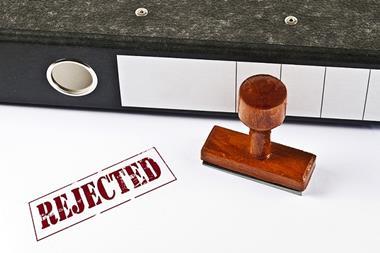Insurers cut rates too much before Laspo - Adrian Brown
RSA is planning to further reduce its exposure to the underpriced UK motor market after its combined ratio worsened by 10.9 points to 111.7% in 2013.
RSA cut back net written motor premiums by 9% to £377m and made an underwriting loss of £40m (2012: £7m profit) last year.
Its rates were 2% higher in December 2013 than December 2012, but in March 2013 were 5% lower than the same month one year ago.
UK and Western Europe chief executive Adrian Brown said he was “still cold on UK motor”.
Speaking to Insurance Times Brown said prices were lowered too much in anticipation of the savings insurers expected to make from Laspo (Legal Aid, Sentencing and Punishment of Offenders Act).
RSA now plans to focus its motor policy sales efforts on customers with more than one policy, as well as growing in telematics through its own launch and partnership with Ingenie, for which it is one of three underwriters.
Pulling back from underwriting without reducing its expense base and dealing with prior year claims increased RSA’s expense ratio Brown explained.
“It always takes a bit longer to take expenses out than volumes,” he said.
“But there’s still an opportunity to improve our self service capability.
“And I still think we can increase our retention rates on motor, particularly on the direct side.”
Brown described RSA’s UK personal lines results as a “tale of two halves” after it reported a 99.8% combined ratio for pet insurance and 87.4% for home.
Liability
RSA strengthened reserves by £20m for UK deafness claims – which it has seen quadruple in the last four years.
Rising industrial deafness and professional indemnity claims helped push RSA’s UK commercial liability combined operating ratio (COR) to up 32.2 percentage points to 140% in 2013.
In 2010 RSA received an average of 200 deafness claims a month. By last year it had increased to 800 claims per month.
The number of claims settled at nil has also increased, from 50% of claims in 2010 to 65% last year.
“It’s driven by claimant solicitors,” Brown said. “The majority end up being settled at nil because they’ve got no firm basis.
“Well over half of the cost goes to the lawyer,” he added.
RSA also strengthened reserves for professional indemnity claims by £35m. Brown said these were particularly to pay claims for professions RSA no longer underwrites including solicitors and surveyors, and related to claims made up to six years ago.
RSA’s UK commercial book made a £15m loss but would have made a £45m underwriting profit without reserve margin strengthening (2012 restated: £41m loss).
“That says to me the turnaround in the UK commercial business has continued to progress well,” Brown said.
Jobs
RSA chief executive Stephen Hester said this morning that jobs would go as RSA looks to reduce its expenses, but that there were “no immediate or substantial announcements”
Asked for his message to RSA’s UK staff, Brown said the insurer had already reduced its workforce by 13% in the last two years through a mix of redundancies and not replacing people when they leave.
“My UK staff are used to us continually looking to improve our business. In the last two years we’ve done this in a quiet way where we’ve talked to the people affected as soon as possible rather than putting everybody under unnecessary stress.”
“I think people would be surprised that it’s 13% because you do it quietly and not in a big macho way. So yes we have to get more efficient, but we’ll continue to do it in that way.”
Strength and transparency
RSA increased its reserves by a further £60m to improve its reserve margin from 3% to 5% in the UK.
Today was also the first time RSA published its reserve margin.
“Lots of companies in the UK won’t disclose their reserve margins and we’ve not said we’ll give that number every single time,” Brown said. “But Stephen [Hester] is a man who believes in transparency and we’re disclosing a lot more info more than we have done in the past,” he said.
RSA has also purchased “adverse development cover” reinsurance from Berkshire Hathaway which will pay out if RSA’s claims bill passes £500m above its actuarial best estimates.
The cover and the boosted reserve margin is part of a RSA’s efforts to improve its capital position.
Brown said “From a capital perspective this is all about putting the business on a very strong footing. We’d be hopeful S&P will recognise that and we’re hopeful the actions they’ve taken will give them a degree of comfort.
RSA’s IGD surplus, a measure of how much capital it has beyond the regulatory minimum, plunged from £1.2bn to £0.2bn last year.
RSA said the £775m rights issue, which will be formally launched in March, and plans to sell £300m of overseas businesses, would increase the surplus to £1.3bn.
Ratings agency Standard & Poor’s downgraded RSA’s financial strength rating to A- in December, its lowest rating for a decade, and warned its evaluation of the insurer’s financial strength could go up or down.
Asked if he thought S&P would maintain its A- rating or upgrade to a single A, Brown said: “We believe we’ve taken all the actions they may have expected us to take and I’d be hopeful over time that reflects in their rating.
“They’re maybe always quicker to downgrade than upgrade. But we’re hopeful it will remove some of the negativity.”

































No comments yet